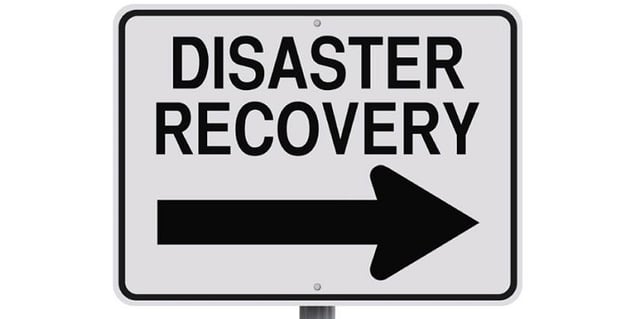The first steps of disaster recovery take place long before any disaster strikes your company's IT section and if the correct plan is in place your business will be able to weather any storm thrown up by this tumultuous world. So, what do we mean by disaster? In this context, a disaster is any large and
catastrophic event, either natural or man-made, that can have a serious impact on your ability to
function as a business. These incidences include calamities such as hurricanes and tornadoes, wars
and civil unrest, or something as simple as an indispensable IT manager having misfortune befall them
and being unable to instruct his replacement how to keep his idiosyncratic system running. Obviously,
some of these are more likely than others but a manager who doesn't plan for the worst will find scant
consolation as he watches his company crumble by claiming that “Ireland isn't supposed to have
hurricanes.”

Disaster recovery is a vital aspect of business continuity and can often be the difference between a company reopening its doors and closing permanently. Since the early seventies, when data began to
migrate to computers and business managers started to recognise the importance of mainframes and
databases, disaster recovery has become an integral part of any forward-thinking business's plan. Data
collected in the U.S.A. clearly demonstrates the importance of data recovery and disaster recovery.
The dependence of a company on its IT section is starkly illustrated by a study which found that 43%
of businesses that experience a major loss of business data never reopen and 29% close within two
years. We can see that disaster recovery planning, while a subset of business continuity planning, is an
extremely important and sometimes overlooked area of business and is something every executive
should bear in mind when planning the future of their business.
If you have succeeded in setting up your Disaster Recovery plan you will be able to restore your data, the most vitally important part of your business' recovery. There are a few different options for data storage. You can opt to back up your data regularly to tape and send these tapes offsite. These allow you peace of mind, knowing that should your place of business be destroyed along with the physical servers, your data is at a different location safe. You can also choose to replicate your data to an offsite location and store your data on their servers. In the event of an accident or catastrophe you will simply need to synchronise your new servers with the servers at this location for your data to be restored to your servers. The most technologically advanced method for data backup is undoubtedly cloud storage,
whereby your data is stored in multiple servers in multiple locations, typically owned by a hosting
company.
To find out more, download our free whitepaper on Disaster Recovery.

